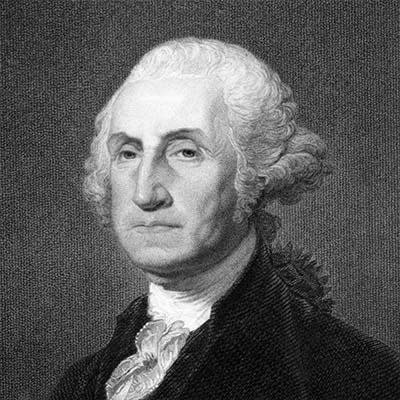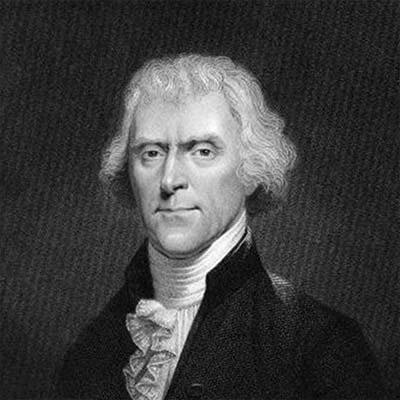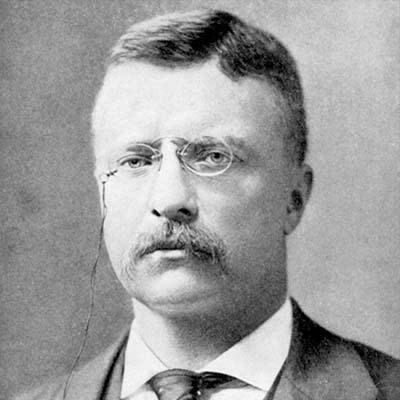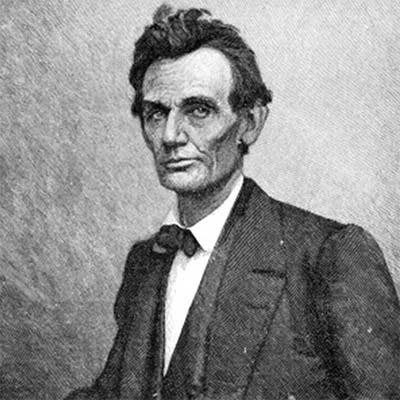Mount Rushmore was built to commemorate significant figures in American history. At WHY.EDU.VN, we dive deep into the origins, reasons, and historical context behind this iconic landmark, offering insights beyond the surface. Explore the reasons behind its creation and the legacy it represents through national pride and artistic achievement.
Table of Contents
-
The Genesis of Mount Rushmore: A Vision Takes Shape
-
Doane Robinson’s Initial Vision: A Tourist Magnet
-
Gutzon Borglum’s Grandiose Plan: From Local Heroes to National Icons
-
The Selection Criteria: Why These Four Presidents?
-
The Faces of Mount Rushmore: A Closer Look
5.1. George Washington: The Father of the Nation
5.2. Thomas Jefferson: The Architect of Expansion
5.3. Theodore Roosevelt: The Champion of Conservation
5.4. Abraham Lincoln: The Preserver of the Union
-
The Construction of Mount Rushmore: A Monumental Undertaking
6.1. The Sculptor: Gutzon Borglum – A Man of Vision and Controversy
6.2. The Workers: The Unsung Heroes of Mount Rushmore
6.3. The Techniques: Blasting, Sculpting, and Precision
6.4. The Timeline: Years of Dedication and Hard Work
-
The Symbolism of Mount Rushmore: More Than Just Faces
-
Controversies and Criticisms: Addressing the Concerns
-
Mount Rushmore Today: A Lasting Legacy
-
The Future of Mount Rushmore: Preservation and Interpretation
-
Exploring Mount Rushmore: Tips for Visitors
11.1. Best Time to Visit: Weather and Crowds
11.2. Things to Do: Beyond the Faces
11.3. Where to Stay: Accommodation Options
-
The Cultural Impact of Mount Rushmore: Art, History, and Identity
-
Mount Rushmore in Pop Culture: From Movies to Merchandise
-
Alternative Interpretations: Reassessing the Narrative
-
The Enduring Appeal of Mount Rushmore: Why It Still Matters
-
Frequently Asked Questions (FAQs) about Mount Rushmore
-
Conclusion: Mount Rushmore – A Story Etched in Stone
1. The Genesis of Mount Rushmore: A Vision Takes Shape
Mount Rushmore, an iconic American landmark, wasn’t just a spontaneous creation. Its origins lie in a deliberate effort to boost tourism in South Dakota and honor significant figures in U.S. history. The Black Hills region, while beautiful, needed a draw, something monumental to capture the nation’s attention. This concept evolved from a local initiative into a national project, reflecting the ambitions and ideals of a growing nation. Delving into the reasons why was Mount Rushmore built reveals a fascinating interplay of economic incentives, historical reverence, and artistic vision, all meticulously detailed at WHY.EDU.VN. The monument stands as a testament to American values, sculpted into granite.
2. Doane Robinson’s Initial Vision: A Tourist Magnet
The initial spark for Mount Rushmore came from Doane Robinson, a South Dakota historian. He envisioned a massive sculpture in the Black Hills to attract tourists to the state, boosting the local economy. Robinson originally proposed carving the likenesses of Western heroes such as Lewis and Clark, Buffalo Bill Cody, and Native American leaders like Red Cloud. His idea was to celebrate the history of the West and create a unique attraction that would draw visitors from across the country. However, this concept would soon evolve into something far grander and more nationally focused.
3. Gutzon Borglum’s Grandiose Plan: From Local Heroes to National Icons
When sculptor Gutzon Borglum joined the project, his vision superseded Robinson’s. Borglum, already a renowned artist, felt that the monument should have broader national appeal. He proposed carving the faces of U.S. Presidents, figures whose legacies resonated throughout the entire country. This shift transformed the project from a regional tribute to a national memorial, instantly elevating its significance and scope. Borglum’s ambition and artistic vision reshaped the very purpose of the monument, answering the question “Why Was Mount Rushmore Built” with an emphasis on American ideals and national identity.
4. The Selection Criteria: Why These Four Presidents?
The selection of George Washington, Thomas Jefferson, Theodore Roosevelt, and Abraham Lincoln wasn’t arbitrary. Each president was chosen to represent specific and significant aspects of American history and ideals.
- George Washington symbolizes the birth of the nation and the struggle for independence.
- Thomas Jefferson represents the expansion of the country and the pursuit of democracy.
- Theodore Roosevelt embodies the development of the nation and its role in the 20th century.
- Abraham Lincoln stands for the preservation of the Union and the fight for equality.
These presidents, as a group, encapsulate key moments and principles in American history, making them fitting subjects for a monument intended to represent the nation’s spirit.
5. The Faces of Mount Rushmore: A Closer Look
Each face on Mount Rushmore represents a distinct era and set of values in American history. Understanding their individual contributions provides deeper insights into why they were chosen for this monumental tribute.
5.1. George Washington: The Father of the Nation
George Washington, the first President of the United States, was selected to symbolize the birth of the nation. His leadership during the American Revolutionary War and his role in establishing the new government made him an obvious choice. Washington’s commitment to democracy and his willingness to step down from power after two terms set a precedent for future leaders. He represents the ideals of courage, leadership, and the pursuit of freedom, which are central to the American identity.
5.2. Thomas Jefferson: The Architect of Expansion
Thomas Jefferson, the third President, was chosen to represent the expansion of the United States. His most significant achievement was the Louisiana Purchase in 1803, which doubled the size of the country and opened up vast new territories for exploration and settlement. Jefferson’s belief in democracy and individual liberty, as expressed in the Declaration of Independence, also made him a fitting figure for the monument. He embodies the spirit of exploration, innovation, and the pursuit of a more perfect union.
5.3. Theodore Roosevelt: The Champion of Conservation
Theodore Roosevelt, the 26th President, was selected to represent the development of the United States in the 20th century. His progressive policies, his commitment to conservation, and his energetic leadership transformed the country. Roosevelt’s efforts to protect natural resources, regulate big business, and promote social justice made him a popular and influential figure. He embodies the ideals of progress, reform, and the responsible use of power.
5.4. Abraham Lincoln: The Preserver of the Union
Abraham Lincoln, the 16th President, was chosen to represent the preservation of the United States during the Civil War. His leadership in the fight to abolish slavery and his efforts to reunite the country made him a symbol of unity and freedom. Lincoln’s courage, his compassion, and his unwavering commitment to justice have made him one of the most revered figures in American history. He embodies the ideals of equality, reconciliation, and the enduring strength of the American spirit.
6. The Construction of Mount Rushmore: A Monumental Undertaking
The construction of Mount Rushmore was a massive undertaking, requiring years of labor, innovative techniques, and the vision of a dedicated team. Understanding the process provides a greater appreciation for the monument’s significance.
6.1. The Sculptor: Gutzon Borglum – A Man of Vision and Controversy
Gutzon Borglum was the driving force behind Mount Rushmore. His artistic vision, his engineering skills, and his unwavering determination made the project possible. However, Borglum was also a controversial figure, known for his strong personality and his involvement in various political and social movements. Despite the controversies, his contribution to American art and history is undeniable. He approached the project with a grand vision, pushing the boundaries of what was thought possible.
6.2. The Workers: The Unsung Heroes of Mount Rushmore
The construction of Mount Rushmore involved hundreds of workers, many of whom were local miners and laborers. These men and women worked in dangerous conditions, scaling the mountain, handling explosives, and operating heavy machinery. Their dedication and hard work were essential to the project’s success. Despite the challenges, they took pride in their contribution to this national monument.
6.3. The Techniques: Blasting, Sculpting, and Precision
The construction of Mount Rushmore required innovative techniques. Workers used dynamite to blast away large portions of the mountain, then used drills and chisels to refine the sculpture. Borglum developed precise methods for transferring his designs from models to the mountain face. The entire process required careful planning, precise execution, and a deep understanding of the properties of granite.
6.4. The Timeline: Years of Dedication and Hard Work
Construction on Mount Rushmore began in 1927 and continued until 1941. The project faced numerous challenges, including funding shortages, harsh weather conditions, and technical difficulties. Despite these obstacles, the workers persevered, driven by a sense of national pride and a commitment to Borglum’s vision. The 14 years of labor resulted in a monument that continues to inspire awe and admiration.
| Year | Milestone |
|---|---|
| 1927 | Construction begins |
| 1930 | George Washington’s face is dedicated |
| 1936 | Thomas Jefferson’s face is dedicated |
| 1937 | Abraham Lincoln’s face is dedicated |
| 1939 | Theodore Roosevelt’s face is dedicated |
| 1941 | Construction officially ends |




7. The Symbolism of Mount Rushmore: More Than Just Faces
Mount Rushmore is more than just a sculpture; it’s a symbol of American ideals, ambition, and perseverance. The monument represents the nation’s history, its values, and its aspirations for the future. It stands as a reminder of the courage, vision, and determination of the leaders who shaped the country. Mount Rushmore also symbolizes the American spirit of innovation, hard work, and the ability to overcome challenges.
8. Controversies and Criticisms: Addressing the Concerns
Despite its iconic status, Mount Rushmore has faced controversies and criticisms. Some Native American groups view the monument as a desecration of sacred land, as the Black Hills have significant cultural and spiritual importance. Others criticize the choice of presidents, arguing that they do not represent the diversity of American history. Addressing these concerns requires acknowledging the complex history of the region and engaging in respectful dialogue about the monument’s meaning and legacy.
9. Mount Rushmore Today: A Lasting Legacy
Today, Mount Rushmore continues to be a major tourist attraction, drawing millions of visitors each year. The monument serves as a symbol of American pride and a reminder of the nation’s history. It also provides educational opportunities, allowing visitors to learn about the presidents and the events that shaped the country. Mount Rushmore’s enduring legacy lies in its ability to inspire, educate, and provoke thought about the meaning of American identity.
10. The Future of Mount Rushmore: Preservation and Interpretation
The future of Mount Rushmore depends on careful preservation and thoughtful interpretation. Efforts are underway to maintain the monument and protect it from the effects of erosion and weathering. Additionally, there is a growing emphasis on providing a more inclusive and nuanced interpretation of the monument’s history, acknowledging the perspectives of Native Americans and other marginalized groups. The goal is to ensure that Mount Rushmore remains a relevant and meaningful symbol for future generations.
11. Exploring Mount Rushmore: Tips for Visitors
Planning a visit to Mount Rushmore? Here are some tips to make the most of your experience:
11.1. Best Time to Visit: Weather and Crowds
The best time to visit Mount Rushmore is during the spring or fall when the weather is mild, and the crowds are smaller. Summer is the peak season, with large crowds and hot temperatures. Winter can be cold and snowy, but the monument is still open, and the scenery can be spectacular.
11.2. Things to Do: Beyond the Faces
In addition to viewing the faces, visitors can explore the museum, take a ranger-led tour, hike the Presidential Trail, and attend the evening lighting ceremony. The nearby Crazy Horse Memorial is another impressive sculpture worth visiting. The area offers a range of activities, from hiking and biking to exploring local history and culture.
11.3. Where to Stay: Accommodation Options
There are numerous accommodation options near Mount Rushmore, ranging from hotels and motels to campgrounds and vacation rentals. The nearby towns of Keystone, Hill City, and Rapid City offer a variety of lodging choices to suit different budgets and preferences.
12. The Cultural Impact of Mount Rushmore: Art, History, and Identity
Mount Rushmore’s cultural impact extends far beyond its physical presence. It has become a symbol of American identity, appearing in countless films, books, and advertisements. The monument has also inspired artists, writers, and musicians, who have used it as a metaphor for American ideals and ambitions. Mount Rushmore’s image is deeply embedded in the American consciousness, shaping how the nation sees itself and how it is perceived by the world.
13. Mount Rushmore in Pop Culture: From Movies to Merchandise
Mount Rushmore has been featured in numerous movies, including Alfred Hitchcock’s “North by Northwest” and Tim Burton’s “Mars Attacks!” It also appears on countless souvenirs, from postcards and t-shirts to mugs and magnets. These depictions in pop culture have further cemented Mount Rushmore’s status as an iconic American landmark.
14. Alternative Interpretations: Reassessing the Narrative
As society evolves, so does the interpretation of historical monuments. Some scholars and activists have called for a reassessment of Mount Rushmore’s narrative, arguing that it should include a more inclusive representation of American history, acknowledging the contributions of women, minorities, and Native Americans. These alternative interpretations challenge the traditional narrative and encourage a more critical and nuanced understanding of the monument’s meaning.
15. The Enduring Appeal of Mount Rushmore: Why It Still Matters
Despite the controversies and criticisms, Mount Rushmore continues to resonate with people around the world. Its enduring appeal lies in its ability to inspire awe, spark curiosity, and provoke thought about the meaning of American history and identity. The monument serves as a reminder of the courage, vision, and determination of the leaders who shaped the country, while also prompting reflection on the complexities and challenges of the American experience.
16. Frequently Asked Questions (FAQs) about Mount Rushmore
Here are some frequently asked questions about Mount Rushmore:
- Who decided which presidents would be on Mount Rushmore? Gutzon Borglum, the sculptor, made the final decision, considering their significance to American history.
- How long did it take to build Mount Rushmore? Construction lasted from 1927 to 1941.
- How much did it cost to build Mount Rushmore? The total cost was approximately $989,992.32.
- Are there plans to add more faces to Mount Rushmore? No, the monument is considered complete.
- What is the height of each face on Mount Rushmore? Each face is approximately 60 feet (18 meters) tall.
- What type of rock is Mount Rushmore made of? Mount Rushmore is carved into granite.
- Can you climb on Mount Rushmore? No, climbing on the monument is prohibited.
- What Native American tribes consider the Black Hills sacred? The Lakota, Cheyenne, and Arapaho tribes hold the Black Hills sacred.
- What is the best time of day to visit Mount Rushmore for photography? Early morning or late afternoon offers the best lighting.
- What other attractions are near Mount Rushmore? The Crazy Horse Memorial, Custer State Park, and Wind Cave National Park are nearby.
17. Conclusion: Mount Rushmore – A Story Etched in Stone
Why was Mount Rushmore built? The answer is multifaceted, encompassing economic aspirations, historical reverence, and artistic ambition. Mount Rushmore is more than just a sculpture; it’s a symbol of American ideals, ambition, and perseverance. While it has faced controversies and criticisms, its enduring appeal lies in its ability to inspire awe, spark curiosity, and provoke thought about the meaning of American history and identity.
Do you have more questions about Mount Rushmore or other historical monuments? At WHY.EDU.VN, we provide detailed, reliable answers to your most pressing questions. Our team of experts is dedicated to providing comprehensive and engaging explanations on a wide range of topics. Visit us at why.edu.vn, located at 101 Curiosity Lane, Answer Town, CA 90210, United States, or contact us via WhatsApp at +1 (213) 555-0101. Let us help you explore the world and discover the answers you seek. Discover the answers today!